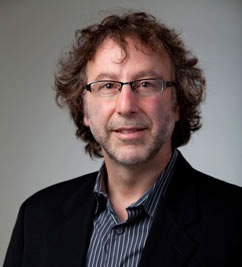Tangibility for Teaching, Learning and Communicating Mathematics
September 15, 2011

Martha Alibali
Talk about getting high school students engaged! Let’s give them the tools they need to build a big catapult to hurl the projectiles of their choice across a gym and land on, or near, a target.
Hurling accurate projectiles, or to put it more academically, the science of space and motion, has wide-ranging relevance for what children need to learn in school. Just think of the mathematics involved.
UW-Madison education professor Mitchell Nathan, psychology Martha Wagner Alibali, and colleagues have long sought to advance understanding of learning and teaching mathematics and engineering. Their theory of embodied mathematical cognition (see sidebar) applies to a broad range of people, settings, and activities.
Nathan himself is a boundary crosser, holding degrees in psychology, mathematics, history, and electrical engineering. He says the most successful mathematics students are those who maintain conceptual cohesion across different kinds of modal engagements, from catapults or circuits to algebra. The key question is, what concepts will hold across all these varying modes?
Answers to this question should lead to useful perspectives on the nature of mathematical knowledge for curriculum designers, for teachers, and for the technical workplace.

Mitchell Nathan
Nathan and Alibali, along with colleagues at Vanderbilt University and San Diego State University, observe how students in high school electrical and mechanical engineering classrooms pursue mathematical symbols and science concepts through a variety of tools, objects, and representations. Projects require students to work with physical models, electrical circuits, Boolean algebra, CAD systems, simulation software and computer-based geometry applications.
Nathan’s team of researchers studies how people in school and workplace settings learn the mathematics of space and motion. Their design experiments span diverse settings. At Vanderbilt the project involves an extended summer program for talented high school students from racially diverse and/or economically disadvantaged communities. Another component at San Diego State University offers methods courses for secondary pre-service mathematics teachers.
The multi-campus research team includes pre-service high school mathematics teachers, high school students, pre-engineering vocational students, and talented middle and high school youth, in addition to professional mathematicians, graduate students in mathematics, and professionals working with mapping and spatial analysis. The researchers represent a range of disciplines, including educational and developmental psychology, educational technology, teaching and teacher education, literacy, mathematics, and mathematics education. They bring together expertise from a range of research methodologies, including design-based research, interactional analysis, ethnography, experimental design, qualitative and quantitative discourse analysis methods, gesture studies, protocol analysis, and curriculum design.
Interpreting student gestures
One of the areas that specifically interests Nathan is how students and teachers uses gestures to enhance their communication. In a recent afternoon presentation, Nathan projected videos of students working in three learning situations.
- Students in a high school mechanical engineering class study the principles of ballistics and projectile motion. The multi-day project requires them to construct devices such as a catapult and to use physics, engineering design, machine shop techniques, algebra, and trigonometry to hurl their favorite projectile. Nathan singles out students’ gestures and motions as they discuss the task with their instructor and among themselves; and the teacher’s gestures as he tries to remind students how their design must instantiate the mathematical principles and physical laws from a previous lesson.
- Students in a third-year digital electronics class design a security monitoring system for a voting booth, using logic, electronics, computer simulation and Boolean algebra. For one student gestures help reveal how the debugging process works when the circuit fails to light up properly under every possible condition.
- Students in an honors geometry class use an interactive computer program to inscribe a quadrilateral inside a large circle. They know that sum of the quadrilateral’s opposing angles must equal 360 degrees. They use Geometer’s Sketchpad to alter parameters and record results. Again, Mitchell notes the importance of the gestures students and the teacher use as they discuss their ideas.
Nathan explains the importance of student gestures and teacher gestures in students’ learning. This project aligns with his continuing work to build an empirical basis for recommendations about how teachers can use gestures effectively. Moreover, the study responds to his long-term interest in teacher education and teacher professional development, as well as his desire to advance basic knowledge of the role of gesture in comprehension and learning.


